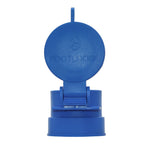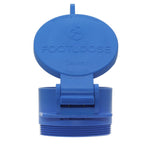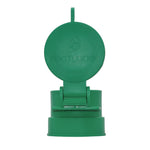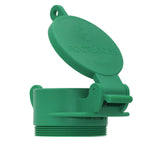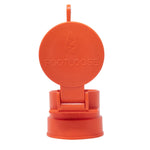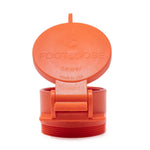You have no items in your shopping cart.
Camping is the ultimate experience for people who love nature. It’s a rare opportunity to get away from the daily hustle and bustle and simply enjoy the fresh air and beauty of the world around us. Of course, you still need some basics for safety and practicality, like lights, temperature control, and so on. Can you power all these essentials without expanding your carbon footprint?
Yes, you can! Using solar power for your RV camping is efficient, cost-effective, and eco-friendly. We’ll guide you through how it works and how you can put solar power into action.
What can you fuel with solar power in your RV?
Before we dive into the how-to of implementing solar power for your RV, let’s talk about what that solar power can and can’t do. Unfortunately, solar power won’t be able to fuel your RV as a replacement for gas. It can, however, operate many of the RV components and appliances you’re using.
Basic RV components
Certain components of your RV are powered by 12-volt energy, or DC energy, which comes from your RV’s 12-volt battery. This includes components like your lights, furnace, water heater, water pump, and so on. While these things are powered by your RV’s battery, you can charge that battery with solar power.
Large appliances
Whether you live in your RV long-term or short-term, you probably have large appliances like an air conditioner, a microwave, TVs, etc. According to the experts at RVShare, these appliances can’t be operated with your 12-volt battery; they need an AC outlet that puts out 110 volts or 120 volts. Normally, this means you can only use those outlets and appliances when you’re hooked up to an energy grid.
When you set up a solar power system, the power will come in as 12-volt DC power. When you add an inverter to the system, though, it can convert this to AC power. This lets it power those large appliances without hooking up to an external energy grid.
Small appliances and electronics
Many RVers have a variety of small kitchen appliances, too, like toasters, coffee makers, and other conveniences. These also need to run on 110-volt or 120-volt AC power. As with your large appliances, these small appliances can be powered by solar energy if you use an inverter.
How to use solar power for RV camping
Using solar power for your RV can allow you to enjoy more time in remote, peaceful destinations in addition to saving you money on energy costs and making your RV life more environmentally-friendly. So how do you get started? Follow these straightforward steps.
Choose your type of solar kit
There are two ways to do solar power for an RV: onboard or portable.
An onboard system is a system that is permanently installed in your RV. The panels are installed on your RV’s roof and continue to charge throughout the day. A portable system, on the other hand, has panels that you store and transport inside your RV. When you’re stationary, you take out the panels and set them up on the ground outside your RV so they can generate energy.

There are pros and cons to each, of course. An onboard solar panel system is more convenient long-term because there’s no need to store the panels or to set them up and take them down when you move. At the same time, onboard systems cost more initially and require time or professional services to install. Portable systems have a lower cost to entry, but they can be irritating to set up and take down if you move around frequently, and they’re not as durable against the weather compared to onboard systems.
Assess your energy needs
Arguably the trickiest part of setting up a solar power system for your RV is determining how much energy you need. This will vary from RVer to RVer.
Your energy use will depend on the types of appliances and electronics you want to be able to power. It also depends on weather conditions. For instance, do you spend most of your time in temperate environments or are you in a hot climate where you need to use your air conditioner frequently?
You also want to consider your habits and activities. Digital nomads who work full-time on computers from their RVs need to power all those devices. You’ll also want to be able to take in more solar energy if you plan to spend a large amount of your time off-grid or in remote locations, compared to RVers who plan to spend most of their time connected to external power and only want solar power for the occasions when they do go to remote areas.
Not sure how to quantify all this? RV blog Mortons on the Move has a thorough guide to measuring your RV energy needs for solar power.
Purchase your solar power kit
Once you have decided between a portable or onboard system and you have evaluated your solar energy needs, it’s time to choose and purchase a kit. A solar power kit can have all the core equipment you’ll need, like solar panels, a charge controller, wiring equipment, a storage battery, and potentially an inverter. Buying a full kit is typically the way to go, as opposed to buying each component separately, if you want to ensure that your components will work together well.
Proceed with installation
Now that you have all the tools, all that’s left to do is to install your solar power system and start enjoying that natural energy. If you’re electronically and mechanically inclined, you may be able to install the system yourself, especially if you’re setting up a portable system. If you’re installing an onboard solar power system and if you’re not already experienced in this type of work, though, it’s best to hire a professional.
Harnessing solar power for your RV
Solar power is the ultimate upgrade for anyone’s RV lifestyle, enabling you to take your RV into more remote and adventurous locations, while also protecting the planet so you and others can continue to enjoy it for generations to come. With this guide in hand, using solar power for your RV is easier than you might expect.



